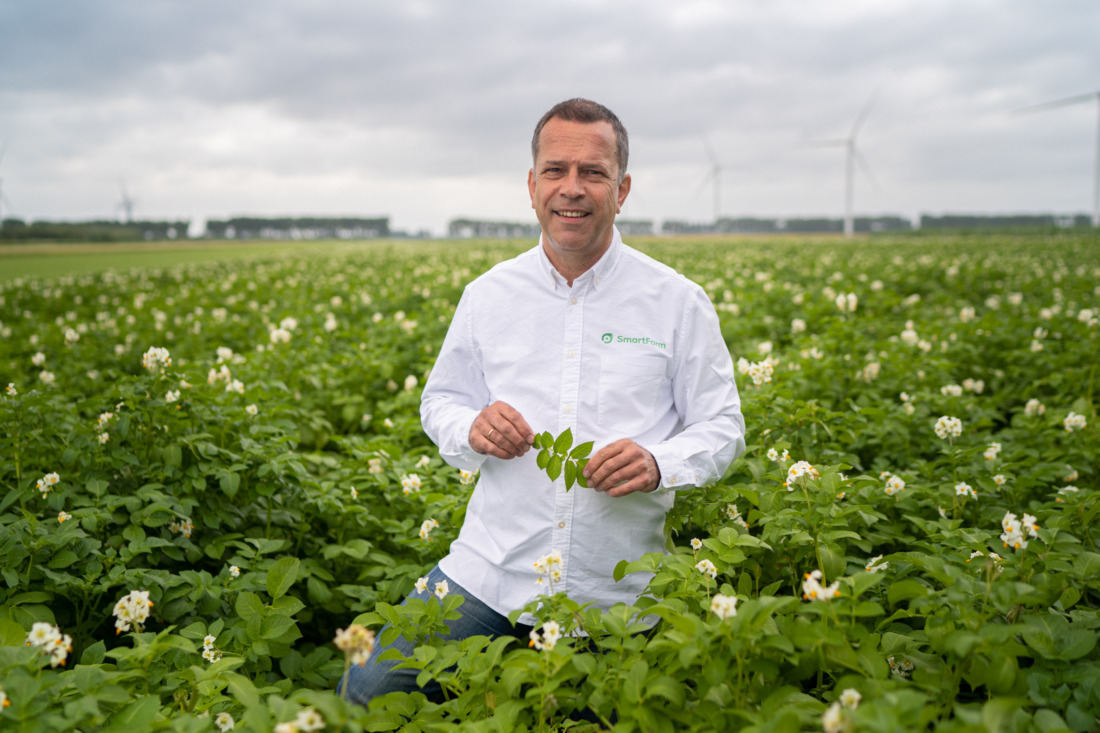When is the ideal time to spray? The conditions between plants determine the absorption and action of crop protection products. SmartFarm translates this data into clear spray recommendations. Smarter for your crop and the environment.
The effect of a spray depends very much on the weather - especially the weather ín the crop. Think of sunlight, temperature, humidity, precipitation and wind. These factors determine how well a crop protection product does its job and how much the plant absorbs. Under poor conditions - high radiation, low humidity and a lack of moisture at the roots - plants build up a thick layer of wax that hinders the absorption of pesticides. Under growing, humid weather, on the other hand, absorption is optimal.
Many growers know this, but it remains difficult to determine the best time to spray. That is why there is SmartFarm: a decision support system that combines the meteorological conditions in the crop with the properties of crop protection products. SmartFarm provides hourly insight into the effectiveness of a product and helps choose the right moment and dosage. This reduces environmental impact and improves results.
The weather ín the crop counts
Weather data at 150 cm height by no means say everything about the conditions inside the crop. In a dense crop, humidity is often higher than above it. But in early spring - when the crop is not yet closing the soil - the humidity can actually be much lower. Temperature can also vary greatly. During the day, the crop is regularly 5 to 10°C warmer than at standard altitude. At night, it is often the other way around. These deviations affect the extent to which plants absorb agents - crucial for successful application.
Plants respond to weather
When plants are hardened off, they absorb less. This happens in dry, sunny weather combined with a lack of moisture. The plant protects itself against evaporation by creating a layer of wax - which also makes absorption of pesticides more difficult. If sprayed anyway, the chances of a treatment failure are high. Too wet is not good either: spraying immediately after rainy weather can cause the crop to absorb too much, which causes damage, especially with herbicides.
Means react ó
Herbicides only work well under certain conditions. Soil herbicides, for example, require moist soil followed by precipitation. Foliar herbicides perform best in growing weather, with high humidity and moist soil.
Insecticides work better at higher temperatures: both the insect and the pesticide become more active. Be careful of sunlight, though, because many agents break down quickly under radiation. So the trick is: warm, but little sun at the time of application.
Fungicides benefit from growing weather in the days before application, and dry weather during and immediately after spraying. Contact fungicides dry at lightning speed in sunny weather, which can impair efficacy.
SmartFarm makes timing smart
SmartFarm combines current and expected weather conditions with knowledge about crop protection product properties. The weather data comes from a FieldMate weather module in the crop and SmartFarm calculates hourly expected effectiveness. In a graph, you can see at a glance what the best spray timing is - two days days ahead. This allows you to plan accurately, even in busy weeks.
Experience shows: growers who use SmartFarm adjust their spray timing more often. As a result, their results improve, there are fewer failed applications and less environmental impact.
Fewer agents, more effect
With SmartFarm you choose the optimal moment for a treatment, so a lower dosage is often sufficient. This saves resources and reduces the environmental impact. Smart timing makes the difference - for your crop and the environment.
Also optimize your crop protection?
Stay informed
Keep up to date with the latest developments in SmartFarm


